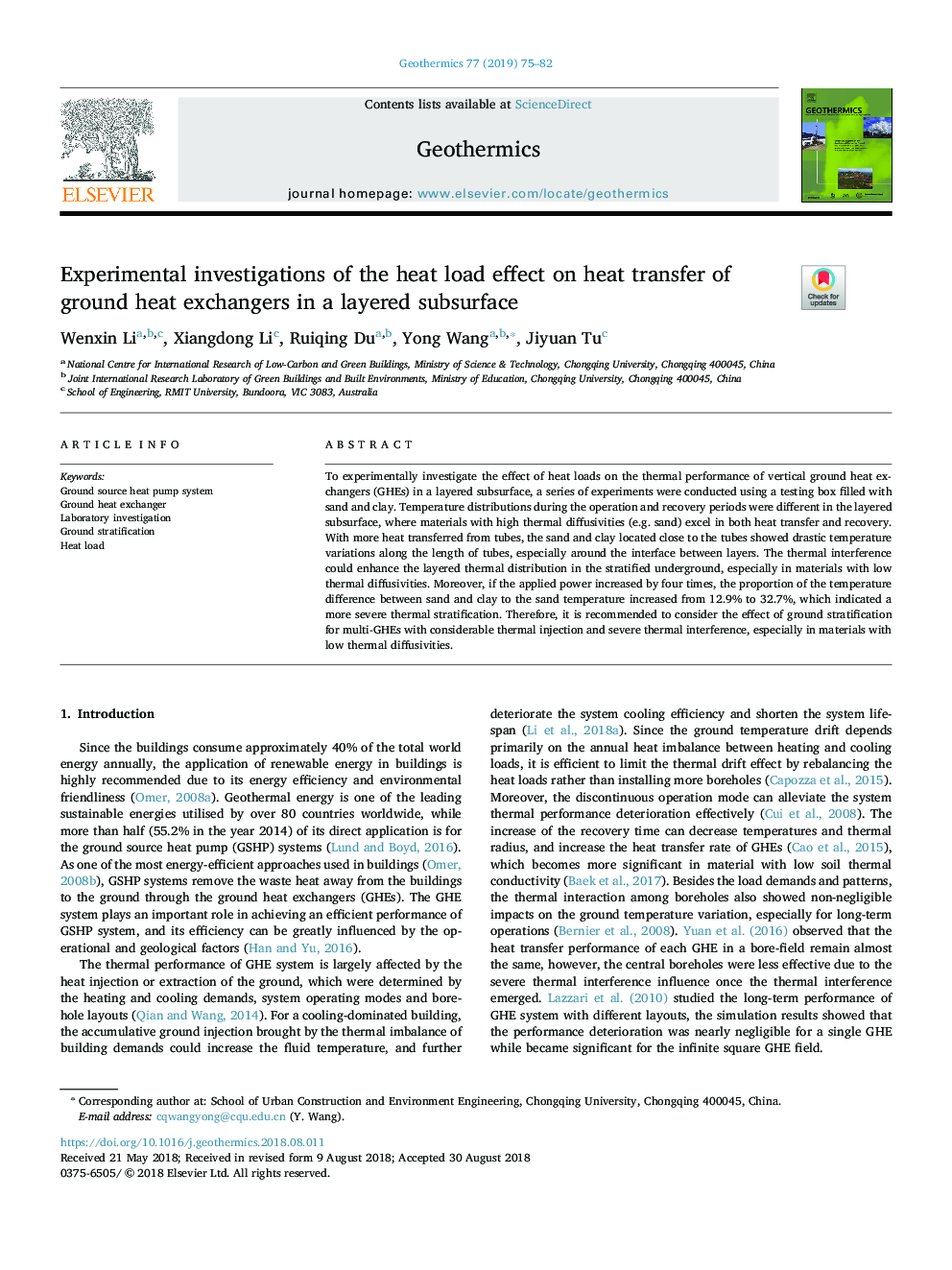| Article ID | Journal | Published Year | Pages | File Type |
|---|---|---|---|---|
| 10136339 | Geothermics | 2019 | 8 Pages |
Abstract
To experimentally investigate the effect of heat loads on the thermal performance of vertical ground heat exchangers (GHEs) in a layered subsurface, a series of experiments were conducted using a testing box filled with sand and clay. Temperature distributions during the operation and recovery periods were different in the layered subsurface, where materials with high thermal diffusivities (e.g. sand) excel in both heat transfer and recovery. With more heat transferred from tubes, the sand and clay located close to the tubes showed drastic temperature variations along the length of tubes, especially around the interface between layers. The thermal interference could enhance the layered thermal distribution in the stratified underground, especially in materials with low thermal diffusivities. Moreover, if the applied power increased by four times, the proportion of the temperature difference between sand and clay to the sand temperature increased from 12.9% to 32.7%, which indicated a more severe thermal stratification. Therefore, it is recommended to consider the effect of ground stratification for multi-GHEs with considerable thermal injection and severe thermal interference, especially in materials with low thermal diffusivities.
Related Topics
Physical Sciences and Engineering
Earth and Planetary Sciences
Geochemistry and Petrology
Authors
Wenxin Li, Xiangdong Li, Ruiqing Du, Yong Wang, Jiyuan Tu,
